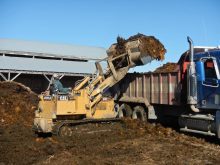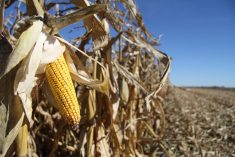Government says sustainable aviation fuel production and imports increased to 52 million gallons in the first half of 2024
SASKATOON — The United States is making progress on its ambitious sustainable aviation fuel target, which could help bolster the country’s demand for imported canola oil.
President Joe Biden’s administration set a target of producing three billion gallons of SAF by 2030.
Related stories:
- U.S. ag secretary rejects biofuel restrictions
- Sustainable aviation fuel won’t short food supply, manufacturers say
The U.S. Department of Energy (DOE) reports that the country had 52 million gallons of production and imports of the fuel in the first half of 2024.
Read Also

Fertilizer method’s link to emissions studied
A researcher says others studying greenhouse gas emissions aren’t considering how the loss of nitrogen into the atmosphere correlates with fertilizer application or if there is an impact to yield.
That is up from five million gallons in 2021, when the SAF Grand Challenge program was announced.
“Based on active projects, between 2.6 and 4.9 billion gallons per year of SAF may be produced domestically by 2030, creating a clear pathway to achieve the SAF Grand Challenge near-term goal,” the DOE said in a news release.
That is music to the ears of Chris Vervaet, executive director of the Canadian Oilseed Processors Association.
“It’s just really great to see that the industry is starting to grow,” he said.
Canada’s canola sector sees the U.S. SAF market as a medium- to long-term opportunity.
“And perhaps a very significant one,” said Vervaet.
The “perhaps” part of that sentence stems from the “laundry list” of technical details yet to be sorted out when it comes to determining what potential feedstocks will be eligible to service the SAF market.
“In the short- to- medium-term, it isn’t entirely clear where canola fits,” he said.
A lot of the details are still up in the air.
“We need them to land hopefully soon, so we have a better gauge of what exactly the opportunity is for canola,” said Vervaet.
One of the biggest threats to canola and other crop-based feedstocks is the indirect land use change factor used in a lot of carbon intensity modelling for SAF.
“That is a considerable penalty and really puts renewable and sustainable crop-based feedstocks behind the competitive eight ball,” he said.
Vervaet said there seems to be more “guardrails” for feedstock eligibility when it comes to SAF than there is for biodiesel and renewable diesel.
However, there are also hurdles with those other biofuels as well.
For instance, there is a concerted effort by U.S. policymakers and commodity groups to exclude foreign feedstocks from qualifying for the proposed 45Z Clean Fuel Production Tax Credit.
Vervaet believes the goal is to exclude imported used cooking oil and tallow, which is something Canada’s canola industry supports.
However, he is disturbed by the “domestic feedstock only” messaging of the groups because that would appear to also exclude imported canola oil.
The U.S. has imported 3.2 billion pounds of used cooking oil through the first eight months of 2024, which is double the volume for the same period a year ago.
That is enough to displace 272 million bushels of soybeans, according to an X post by Susan Stroud of NoBullAg (@SusanNOBULL).
Canada’s canola sector is also deeply disturbed by the California Air Resource Board’s (CARB’s) proposed amendments to that state’s Low Carbon Fuel Standard.
One of those proposed amendments is a 20 per cent cap on the amount of biodiesel and renewable diesel that can be made from soybean and canola oil.
“We haven’t seen CARB move off of that proposal,” Vervaet said.
That’s despite receiving two rounds of feedback on the proposed amendments, which included comments from the canola and soybean industries.
“Clearly that’s going to really challenge the ability to continue to grow our market share in that particular state,” said Vervaet.
He noted that the U.S. SAF sector is being built on the back of government incentives. Incentives are important, he added, but there should also be carbon intensity or volume obligation mandates.
He also thinks there should be similar SAF incentives and mandates in Canada. Ottawa’s Clean Fuel Regulations were a good start but there needs to be more, he said.
“We don’t see anything specific yet for SAF, and that would be something that I think could help really lift a market here in our own backyard.”
















